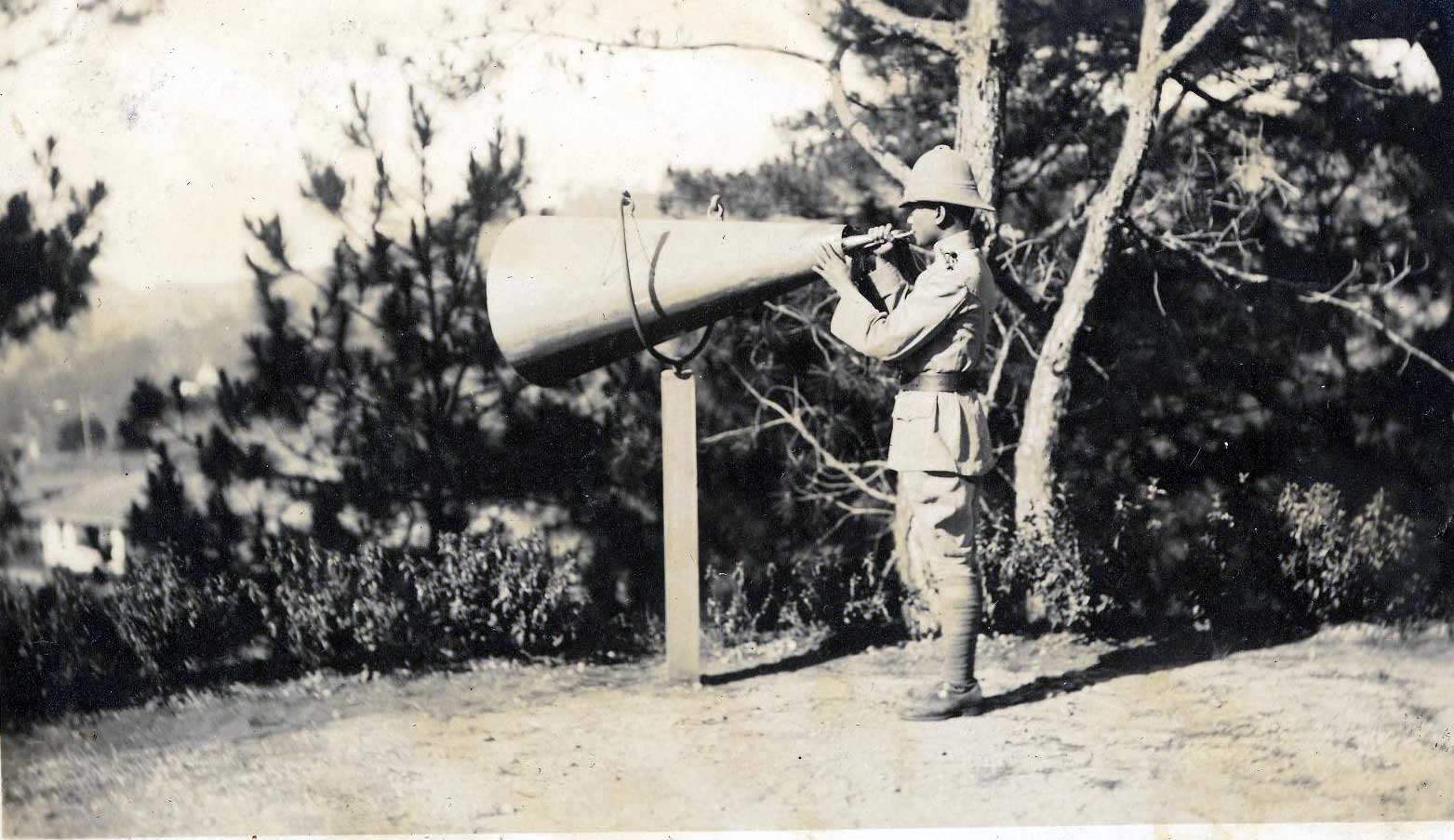The president of the Philippines announced a “separation from the United States” because “America has one too many [misdeeds] to answer for.” Which misdeeds? And why have so many Americans not heard of them before?
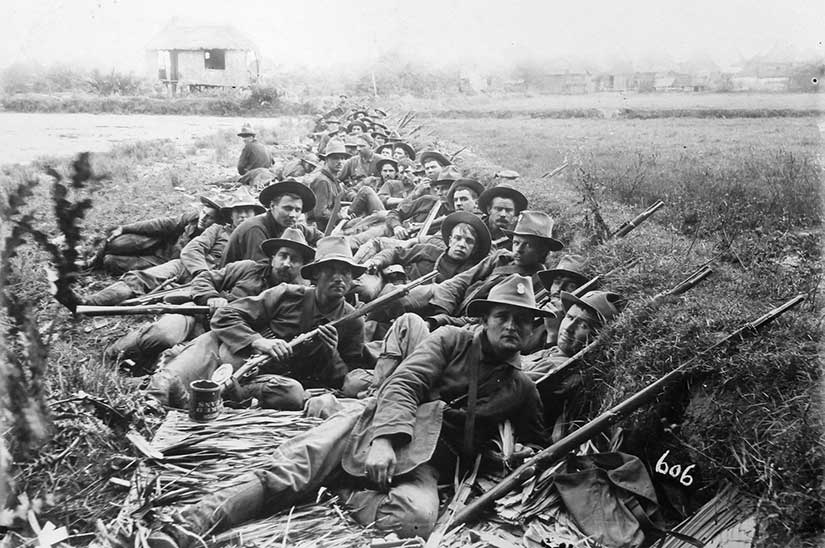
The Philippine-American War (1899-1913) was America’s first great-power conquest and its first overseas insurgency. It was first time the US tried to exert American authority and values abroad. (See my previous post on New Imperialism.)
This war was not a small one. As a percentage of the contemporary population, three times as many American soldiers died in the Philippine-American War as did in the recent Iraq War. More than three-quarters of a million Filipinos died from war and related causes, nearly 10% of the population.
Despite this startling fact, many Americans would have told you that they went to the Philippines with what they believed were good intentions. (They still accepted the legitimacy of imperialism and racial discrimination, though, both which have been a part of the United States narrative from the beginning. If you are looking for non-fiction on this topic, I highly recommend How to Hide an Empire by Daniel Immerwahr and Stamped from the Beginning by Ibram X. Kendi.)
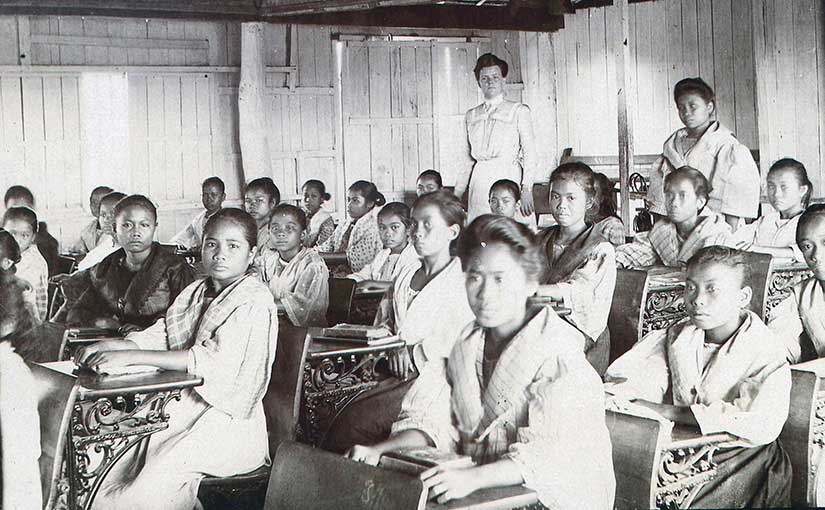
The United States sent over 1000 schoolteachers—and not just to Manila, but to any “pacified” town in the islands. These teachers are usually regarded as the best import of all, especially by the young women of the islands who had been only sparingly educated by the Spanish—and that only if they were wealthy enough to afford it. In my novel Under the Sugar Sun, I reimagined one of these teachers as a Boston schoolmarm named Georgina Potter. Georgie is sent to Bais only to find her fiancé straying, her soldier brother missing, and a prominent nationalist flirting. Adventures (and love) ensue.
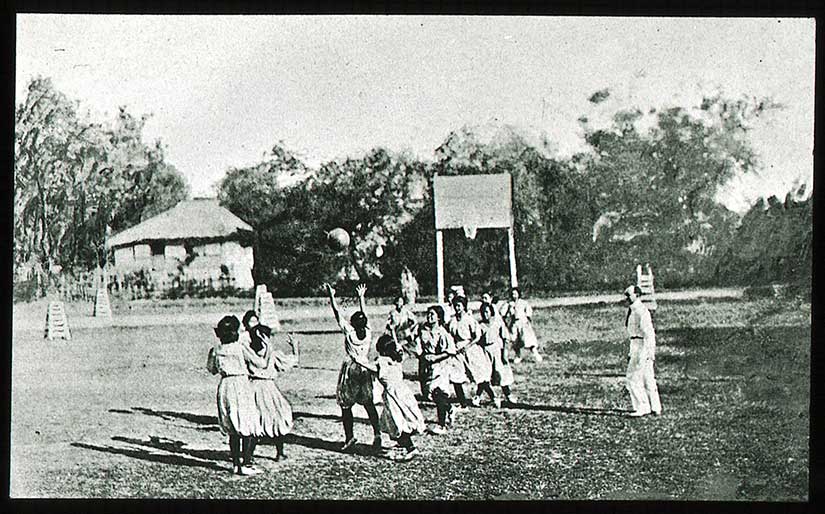
There were other investments in infrastructure and human capital made by the Americans, from roads to ports to the development of the Philippine Supreme Court. Philippine universities founded in this era have become regional attractions, particularly for their science and medical educations.
But it was not all bailes and basketball—though basketball is still wildly popular. There was also a down side to imperialism, obviously, and this appears in my books, too. The second book of the Sugar Sun series, Sugar Moon, features a character who never wanted to be a soldier in the Philippines and will struggle with drug abuse and thoughts of self-harm. (Full content warnings available on this website.) He tries to stop some bad stuff from happening, but the events unfold as history tells us they did—to everyone’s detriment:
In 1901, the American captain of the Balangiga garrison imprisoned the men of the town and used them for forced labor. The town’s retaliatory attack left forty-eight Americans dead, the biggest loss for the Army since Little Big Horn. The American military machine retaliated disproportionately. General Jacob “Hell Roaring Jake” Smith told his men to turn the whole island of Samar into a “howling wilderness”:
I want no prisoners. I wish you to kill and burn, the more you kill and burn the better it will please me.
When asked the limit of age to respect, General Smith said “Ten years.” Smith declared the coasts of Samar to be “safe zones,” but anyone inland was assumed hostile to the United States and therefore a valid target. The entire island was embargoed. Cities grew crowded and diseased, and many starved. There is still a lot of debate about the number of Samareños who died in this period, with figures ranging from 2500 to 50,000. A reasonable judgment is about 15,000, according to historian Rolando O. Borrinaga.
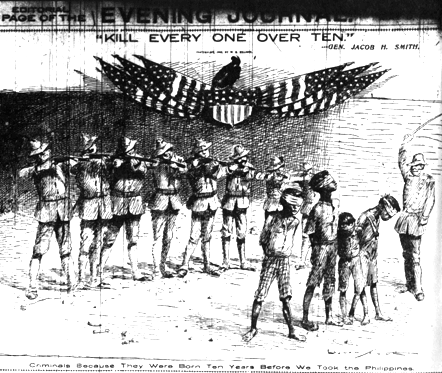
Samar was the My Lai—or the Abu Ghraib—of the Philippine-American War. Newspaper readers in both countries would have been fed daily reports on General Smith’s court-martial, which happened only after a round-about investigation of a totally different incident. With the advent of the trans-Pacific telegraph cable, people could follow events with an immediacy that had been previously impossible. As a result, even though General Smith received only a slap on the wrist, popular outcry in the US later forced President Roosevelt to demand the general’s retirement.
Why such a light punishment? The dirty secret was that Smith’s commanding officers wanted this “chastisement” policy because they agreed with him that “short, severe wars are the most humane in the end. No civilized war…can be carried on on a humanitarian basis.” And the leaders of the insurgency in Samar did surrender in April 1902, only seven months after the attack at Balangiga. The Americans thought the ends justified the means. (Keep in mind that while General Orders No. 100 did allow for severe war, much of what Hughes, Chaffee, Smith, Waller, and Glenn did in Samar violated this code of conduct.)
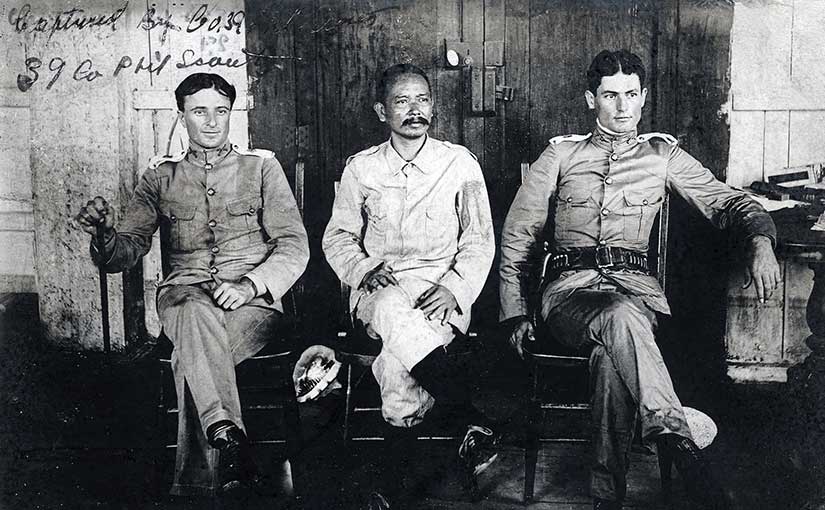
The incident that President Duterte likes to talk about the most was not in Samar, though. The president is from the island of Mindanao, where the United States fought its first war against Muslim separatism. Islam was the primary Filipino religion before the arrival of the Catholic Spanish, and still today about five percent of Filipinos are Muslim. Ninety-four percent of Filipino Muslims, dubbed Moros by Spanish, still live on the large southern island of Mindanao. When the Americans first arrived in the Philippines in 1898, they had enough problems on their hands with the Filipino Christians, so they made a “live and let live” agreement with the Moros. Once the rest of the islands were pacified, though, the Americans tried to extend their rule over Mindanao. They wanted to issue identity cards, collect taxes, outlaw slavery, and disarm the population.
Not all of these are bad things—I’m thinking mostly of the abolition of slavery—but to the Moros these laws struck at the heart of local autonomy. In the resulting fight, young warriors attacked anyone considered an enemy of Islam—and though they were not specifically bent on suicide, they were not afraid of death, either. They were so relentless, in fact, that the American Army had to requisition a whole new firearm, the .45-caliber—the only pistol with enough stopping power to fight Moros armed only with knives. This pistol, named the 1911 after the year it was adopted, was a standard-issue firearm until 1985, and it still remains a favorite of many in the military today.
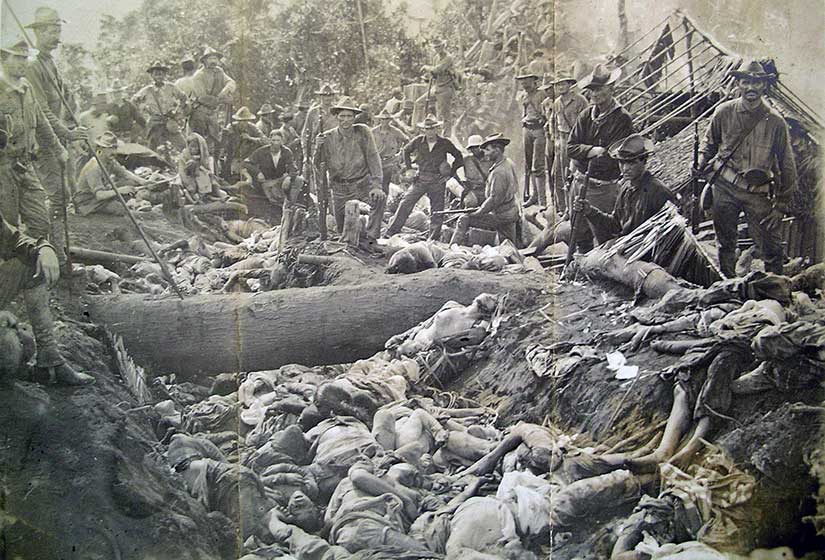
Americans fought their largest engagements against the Moros, and this meant some of the worst massacres happened against the Moros. At Bud Dajo in 1906, the Moros had retreated to the interior of an extinct volcano and were surrounded by American forces who had the high ground. Instead of a slow siege, the Americans fired down into the crater and killed 900 Moros, including women and children. Reports of the event shocked Americans at home, but it did not stop the war, which would rage on for seven more years, until 1913.
Part of the reason the Moro War stretched on so long was that it was all “chastisement” and relatively little “attraction.” In other words, there were fewer hospitals, almost no teachers, less infrastructure, and so on. Today, the Moros have the same complaint against the majority Catholic government of the Philippines—they are not getting the public works and development projects they see in the rest of the islands, but they cannot run their own affairs, either. Though part of Mindanao has been made an autonomous region, such a compromise has not brought an end to the violence. Some groups aim for legitimate political goals, some groups are professional kidnappers-for-hire, and a few are eager hangers-on of the latest Islamist terror organizations, including al Qaeda and ISIS.
Duterte has not cut off ties with the United States. According to the Agence France-Press:
A frequent pattern following Duterte’s explosive remarks against the United States, the crime war and other hot-button issues has been for his aides or cabinet ministers to try to downplay, clarify or otherwise interpret them.
And within a few hours of Duterte’s separation remarks, his finance and economic planning secretaries released a joint statement saying the Philippines would not break ties with Western nations.
Moreover, the White House insists no one has officially asked for a change in relations. The real test will be to see if the Philippines really buys weapons from China and Russia, settles its legal dispute with China over the Spratly Islands bilaterally (cutting out the United States and United Nations), and ceases joint exercises with the US military in the South China Sea.
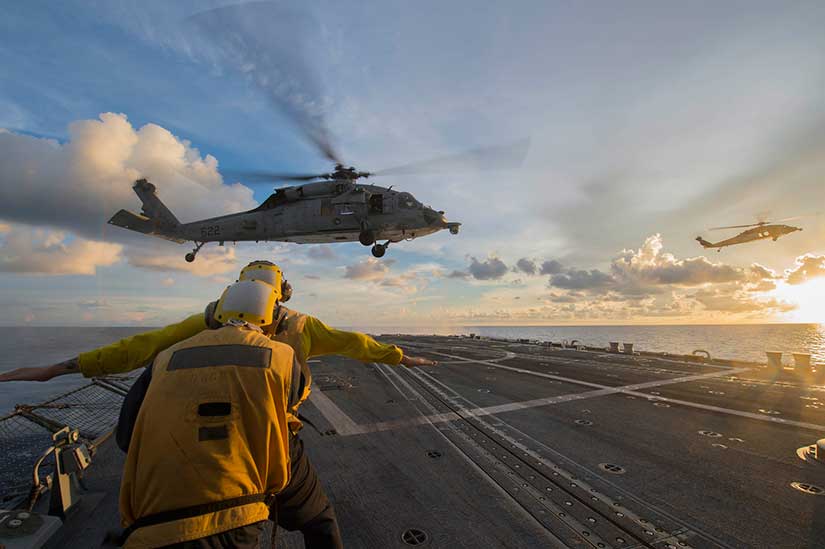
None of this is happening in a vacuum. It is more like a family dispute, where discussions and disagreements today are affected by the baggage of our shared history over the last 120 years. If we approach the news only with an eye on today and ignore the way that relationships have developed over time, we miss all the important subtext.
I have an illustrated talk—“America in the Philippines: Our First Empire”—that shows how our experience in Asia fundamentally changed the U.S. role in the world and launched some of our best known political and military figures, to boot. I will tell you more about the good, the bad, and the ugly of how Americans ruled—and why, despite it all, the Filipino-American friendship has been so strong for so long. I will also show how recent stump speeches on transpacific trade, immigration, and national security are actually reprises from the turn of the century.
Tell your local librarian, community college, high school, veterans group, historical society, book club, or other non-profit. My talk is free to these groups…as long as I can get there.
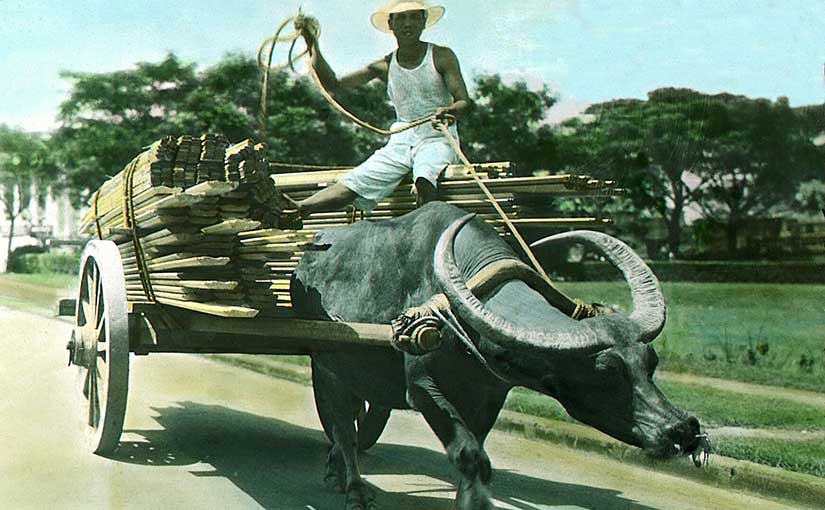
[Featured photograph of a Filipino soldier blowing a horn to call for formation, from the University of Michigan Special Collections Library.]

